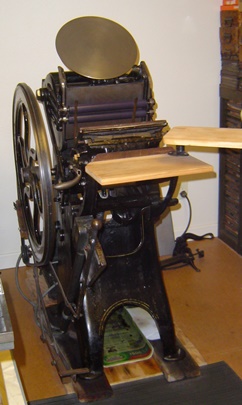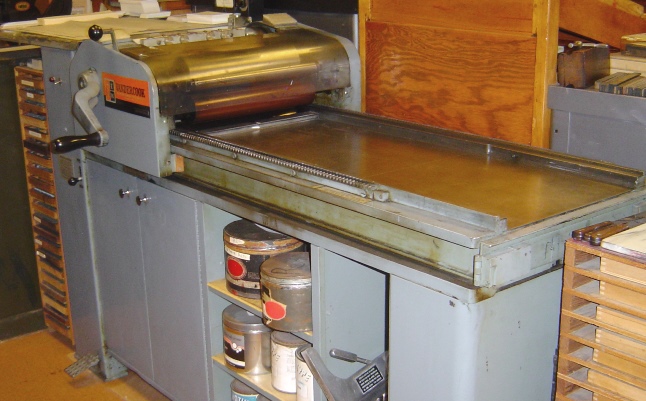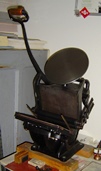
William Golding started manufacturing presses in Boston about 1870. His earliest success was with the Pearl, a model still popular with hobby printers. The Jobber, a larger press introduced in 1880, was designed for professionals.
The No. 6 Jobber is the smallest size. The serial number indicates it was completed May 31, 1906. At about 600 pounds, it's a substantial piece of machinery, but its 24 inch width allows it to fit through most doorways.
The previous owner, Mike Hammerberg, contacted me in early 2000 to ask for help disposing of his print shop. He originally bought the Jobber for $50 from the University of North Dakota Press in 1971. He used it to teach printing for several years at Cooperstown High School, then brought it to California in 1982.


 Among Charlie Hinde's equipment was this 3x5 Kelsey Excelsior that is nearly identical to
my own first press. The rounded handle identifies it as a
post-World War II model.
Among Charlie Hinde's equipment was this 3x5 Kelsey Excelsior that is nearly identical to
my own first press. The rounded handle identifies it as a
post-World War II model.